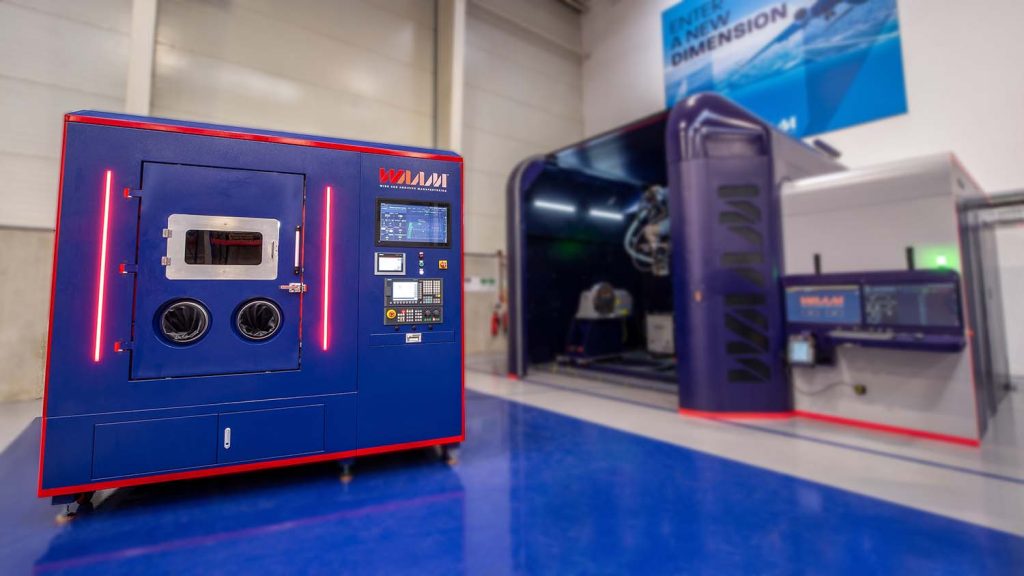WAAM3D’s new MiniWAAM system if looking to open the door to more companies to take wire-fed Direct Energy Deposition (DED) 3D printing in-house for metal parts.
MiniWAAM features WAAM3D’s proprietary end-effectors, sensing hardware, and software, offering a competitively priced manufacturing solution for process development, metallurgical characterisation, production of mechanical test pieces, exploration of new wires, and the testing of new sensors.
Departing from robotic architectures, MiniWAAM features a 3-axis overhead CNC system, plus an additional 500mm rotational table with 60kg payload. The working envelope for the 3D printer is 800 x 800 x 600mm, with a shop floor footprint of 2,400 x 2,100 x 2,300mm.
Its use of 2 wire feeds should also make it of interest for those looking to experiment with composition development and multi-material structure creation, while the systems controlled WAAM3D’s own software suite.
WAAMPlanner, which turns a parts pre-form into executable code for the system and includes planar and non-planar slicing, 2D and 3D sectioning, and layer grouping.
WAAMKeys, populates the tool path plan with process parameters, which are automatically calculated based on geometry and alloy. With advanced thermal compensation modules, it helps achieving the target layer height, regardless of changes in geometrical features.
While WAAMCtrl is forms the operating system for MiniWAAM, including operator dashboard, the component’s digital twin, interactive data navigation and historical database with complete printing process record (parameter by parameter including all dependent variables such as temperature and shape), integrated onto WAAM3D’s hardware and sensors.
WAAM3D list the machine as having a ‘plug&play installation’, with the system meeting full health and safety compliance.
Dr Filomeno Martina, CEO of WAAM3D. said: “We are very excited to be launching MiniWAAM as its introduction brings the benefits of metal 3D printing to an even wider audience. Thanks to its versatility, MiniWAAM is ideal for the creation of small to medium-sized metal parts for prototyping and for production and research applications.
“Moreover, transitioning from MiniWAAM to the much bigger RoboWAAM is a seamless process as the fundamental tech elements are exactly the same.”






